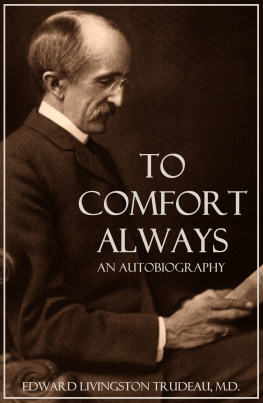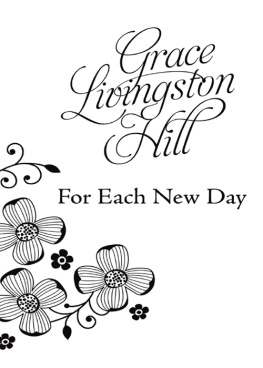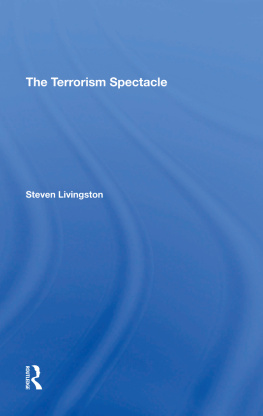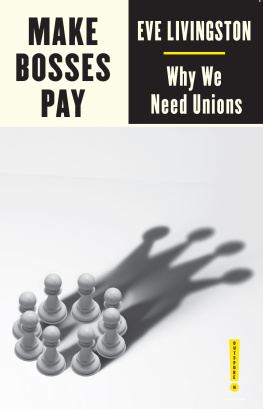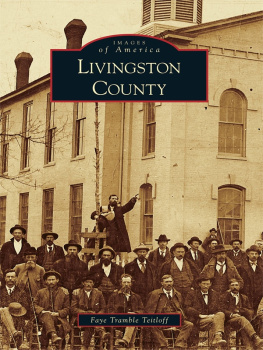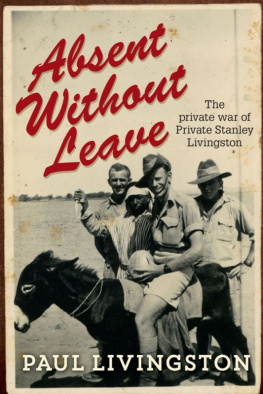The Thing
You Think
You Cannot Do
Also by Gordon Livingston
Only Spring: On Mourning the Death of My Son
Too Soon Old, Too Late Smart:
Thirty True Things You Need to Know Now
And Never Stop Dancing:
Thirty More True Things You Need to Know Now
How to Love: Choosing Well at Every Stage of Life
The Thing
You Think
You Cannot Do
Thirty Truths
about Fear and Courage
Gordon Livingston, M.D.

A Member of the Perseus Books Group
Copyright 2012 by Gordon Livingston
All rights reserved. No part of this publication may be reproduced, stored in a retrieval system, or transmitted, in any form or by any means, electronic, mechanical, photocopying, recording, or otherwise, without the prior written permission of the publisher. For information, address Da Capo Press, 44 Farnsworth Street, 3rd Floor, Boston, MA 02210.
Published by Da Capo Press
A member of the Perseus Books Group
www.dacapopress.com
Library of Congress Cataloging-in-Publication Data is available for this book.
ISBN 978-0-7382-1579-2 (eBook)
Da Capo Press books are available at special discounts for bulk purchases in the U.S. by corporations, institutions, and other organizations. For more information, please contact the Special Markets Department at the Perseus Books Group, 2300 Chestnut Street, Suite 200, Philadelphia, PA 19103, or call (800) 810-4145, ext. 5000, or e-mail .
Editorial production by Marrathon Production Services. www.marrathon.net
Set in 12-point Dante
First Da Capo Press edition 2012
10987654321
To Clare, the bravest person I have ever known.
And to Lucas, our son.
Contents
F ear is the central issue of our time. Once an adaptive emotion that protected our ancestors on the plains of Africa, fear has become a corrosive influence in modern life, eroding our ability to think clearly. Exploited for power by our political leadership and for money by the media, fear is embedded in the way we think about our lives.
Our preoccupation with safety is a natural reaction to our vulnerability to loss. At the same time, the search for perfect safety is absurd given the inevitability of our eventual demise.
Even as our lives have become safer overall, our fears remain intact and lie at the foundation of our most revered institutions, notably religion, which typically promises some version of immortality as a salve for our dread of extinction.
Americans live in an increasingly authoritarian society out of persistent fear that other tribes in distant places are a threat to our way of life, to our very existence. Over the last century, this apprehension has brought us to a continual state of war, which shows no sign of abating. And, although we congratulate ourselves for being a peace-loving people, our national anthem is a tribute to fighting off threatening foreigners. (Because I am, by accident of birth, an American, the reader will find that most societal references in this book derive from this place and time. However, I have tried to choose themes with universal meaning and application.)

As a psychiatrist, I spend my professional life in the presence of fearful people. An entire category of mental disorders is characterized by anxiety, a distress of the mind typified by worry and dread. This disorder is usually distinguished from fear by the fact that anxiety may have no specific object, except when it takes the form of so-called phobias: of crowds, of flying, or of driving, for example. When anxiety is acute, its physiological symptoms are identical to those of fear: sweating, rapid heartbeat, muscular tension. We are, in short, manifesting the once-adaptive fight-or-flight phenomenon except that neither of these responses may now be called for. More common triggers in the present day are things such as public speaking, taking a test, or rejection in love. Fears of failure and humiliation have replaced the threat of imminent death as our most common sources of apprehension.
Collectively, our fears take the form of a pervasive worry that supports huge therapeutic and pharmaceutical industries devoted to the alleviation of emotional distress. Because I work in one of these industries, I routinely employ medications, but I have found myself in recent years invoking virtues such as courage and resilience as alternatives to the sense of victimization and helplessness that medical diagnoses often engender. On the wall of my office hangs a 1915 picture of the British explorer Ernest Shackletons ship Endurance trapped in the ice of the Weddell Sea, near Antarctica. His ultimately successful battle for his crews survival has much to teach us about the courage required to confront adversity of all sorts.
What are we afraid of and what can we do about it? A partial list of fears that I deal with in those seeking psychotherapy include: fear of dying, fear of change, fear of intimacy, fear of loss, fear of failure, fear of success, fear of inadequacy, fear of time, fear of loneliness, fear of the unknown. With a little thought you can doubtless make your own list. Interestingly, anxiety, like its frequent companion, depression, appears to have an element of heritability. You are more likely to suffer excessive apprehension if other members of your biological family are similarly afflicted. No one is sure how this predisposition passes from one generation to the next or on what chromosome(s) it is manifest. Although we will probably find the answer over the next few years, will we then have learned anything about alleviating anxiety itself?
This biological inclination is the reason that most treatment for anxiety includes the use of one medication or another. Drugs that increase serotonin levels in the brain, the SSRI antidepressants, are effective against chronic anxiety. Minor tranquilizers such as Xanax, Ativan, and Klonopin provide significant short-term relief but have the disadvantage of chemical dependency. Psychotherapy also frequently helps, and it is about this process and what it teaches that I will have more to say. The best psychological antidote to anxiety turns out to be some combination of hope and courage. How these virtues are acquired, manifested, and taught are at the core of this book. It is not easy to live a courageous life, and no one is brave all the time or in every circumstance.

Accepting our own mortality becomes most problematic in our middle years. We seek to slow the aging process and to embody the misleading adage that you are only as old as you feel. Some people panic and imagine that they can recapture their youth with new activities, possessions, or relationships. In the movie Moonstruck, someone asks at the dinner table, Why do men cheat? The Olympia Dukakis character replies simply, fear of death.
In middle age we confront our limitations and the slow demise of our dreams. Our best hopes for ourselves have been tested against reality and customarily found wanting. The love of our youth no longer resembles the image in the wedding pictures, nor do we. If we are lucky, we are bored; if unlucky, we impulsively rearrange (and often ruin) our lives. If we are like many people, we have already divested ourselves of our first spouse and are dissatisfied with our second (or third). Too cynical, you say? Look at the divorce statistics and count the couples you know who are truly happy. Our children need us less and our jobs do not usually promise excitement, yet we are glad to have them. We may even be less successful than our parents. We wonder what happened to the universal hope for generational upward mobility.
Next page


